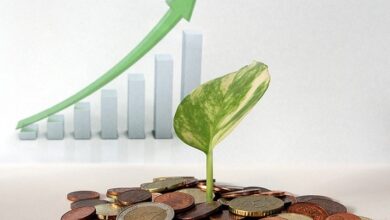Autotroph
In Biology , we can classify living beings according to numerous characteristics and aspects of their organisms. However, there is a very important general classification, but of which not everyone is aware, made considering the way in which beings obtain the energy necessary to survive. In this article we will provide you the information about the Autotroph.
In this sense, we can separate living organisms into basically two large groups: autotrophs and heterotrophs . While the first ones derive the energy they need to live from sunlight, the second group feeds on other living beings.
Autotrophic beings , also known as autotrophs , are those living organisms that manage to obtain the energy and nutrients necessary for their survival through sunlight , in the process of photosynthesis .
The term autotroph comes from the Greek, where auto means oneself, oneself, and trophos is the word used in the sense of feeding. In other words, an autotroph is a being that can feed itself .
Plant organisms, algae and some bacteria are considered autotrophic . Within the food chain, these are the beings that occupy the base, serving as food for organisms that cannot produce their own food, called heterotrophic beings .
In the food chain, autotrophs have characteristics of producer beings , while heterotrophs are called consumers or decomposers, depending on the role they play in the ecosystem .
Photosynthesis
Photosynthesis is the process by which plant autotrophs synthesize their nutrients, forming the glucose molecules that will build their cells and maintain their metabolism .
It consists of a chemical phenomenon in which light energy is transformed into chemical energy from various complex reactions. It is considered the most basic process of energy transformation on the planet. Plant cells then transform CO 2 (carbon dioxide) and H 2 O (water) into glucose.
Chlorophyll molecules, present in the green leaves of plants, absorb light and break down water , thus releasing oxygen and hydrogen. Next, hydrogen combines with CO 2 , resulting in the formation of glucose.
Photosynthesis is a process that takes place in specific organelles of plant cells called chloroplasts . This is where chlorophyll is located , a special green pigment that gives plants their color and is responsible for absorbing sunlight.
This light, when absorbed by plants, has two important functions in photosynthesis:
- boost the transfer of electrons;
- generate a proton gradient, necessary for the formation of energy (ATP).
chemosynthesis
In addition to photosynthesis, there is another procedure adopted by autotrophic organisms to generate energy. It is chemosynthesis , known as photosynthesis in bacteria . It is nothing more than the production of organic matter from the mineral oxidation process , without needing sunlight.
The organisms capable of performing chemosynthesis are a few bacteria, called chemosynthesizers , which generally exist in environments completely devoid of light or organic matter.
Obtaining energy occurs through inorganic oxidations , which makes it possible to obtain organic matter by oxidizing mineral substances. The main bacteria that act in this process are iron bacteria, capable of oxidizing iron, sulfobacteria, which oxidize sulfur, and nitrobacteria, which oxidize nitrogen.
In this process, the production of organic matter takes place from carbon dioxide, water and other non-organic elements . Compared to photosynthesis, chemosynthesis has a much smaller result. Despite this, it is essential for the Nitrogen Cycle , helping to fix it in the soil and plants, contributing to the survival of these organisms.
What are heterotrophs?
Unlike autotrophic beings, heterotrophic organisms are not able to produce their own food , being necessary to consume other living beings to maintain themselves. They take advantage of the carbon sources that make up other beings, such as plants and animals.
In the organization of energy flow and food chains , heterotrophs are those that act as consumers. They depend, directly or indirectly, on the actions of autotrophic beings.
In this case, herbivorous animals are considered primary consumers, as they feed directly on plants, autotrophic organisms and producers within the chain. Carnivores, on the other hand , are called secondary consumers, since they usually feed on herbivores.
In this way, a doe can feed on grasses and serve as food for a lion, for example. In this case, the grass is a producing organism, while the deer is the primary consumer and the lion is the secondary consumer. Thus, it can be said that, even indirectly, the lion depends on the autotrophic production of plants .
Type of power
In the case of heterotrophic (or heterotrophic ) beings , the type of feeding and obtaining energy varies greatly from species to species. In addition to herbivores and carnivores , we can also find omnivorous animals , which feed on both plants and other animals (such as bats and humans).
Those that feed on the remains of dead organisms, such as vultures and hyenas, are called detritivores . Finally, there are hematophagous animals , which feed exclusively on the blood of an animal, such as parasites (fleas, lice and ticks).
In the complex organization of nature, each organism occupies its space and has a well-defined role. Thus, it is possible to visualize this large system as a continuous flow of energy , which accumulates along the food chain. Thus, the producing beings manage to generate energy through photosynthesis. Primary consumers feed on this generated energy by feeding on plants and other producers.
Further down the food chain, these primary consumers serve as food for secondary consumers. These, in turn, are then consumed by both the stored energy of the herbivore animal itself and that of the producing organism, which previously served as food. The cycle continues and the flow of energy is passed on, until it returns to the starting point.
Autotrophs and Photosynthesis
Photosynthesis is the process by which plants, autotrophic organisms, synthesize their own food, forming glucose molecules that will later be used to build and maintain their cellular activities.
Photosynthesis is a chemical phenomenon in which light energy is transformed into chemical energy through a series of complex chemical reactions.
The word photosynthesis means composing substances from light, where “photo” = light and “synthesis” = synthesize. It can be represented by the following chemical equation:
Other autotrophs that do not carry out photosynthesis derive energy from inorganic chemical reactions, in a process called chemosynthesis.


